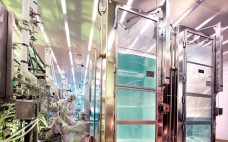The fed-batch culture of Chinese hamster ovary (CHO) cells has become well established as the primary method of manufacturing therapeutic recombinant protein products for various disease indications. Fed-batch process-development approaches focus on supporting high–cell-density cultures that are crucial to achieving high product titers but lead to proportionately high nutritional demands. Exhaustion of key nutrients negatively affects cell growth and ability to produce recombinant proteins. To counter that problem, concentrated feeds are added to the culture. Such feeds tend to be…
Culture Development
Qualification of Scale-Down Bioreactors: Validation of Process Changes in Commercial Production of Animal-Cell-Derived Products, Part 1 — Concept
Implementing continuous process improvements is increasing in priority for the biopharmaceutical industry. Such implementation can be driven by product safety, purity, and stability enhancement opportunities as well as by cost-reduction pressures. Companies invest in projects to improve product quality assurance, safety, and yield as well as production efficiency (1). Such changes may come at any process stage, from early cell-growth methods through final-product packaging improvements. Examples include growth medium optimization, purification column operation optimization, and enhanced recovery during final filling…
Powders and Bulk Liquids
The two major bioprocess fluids — culture media for upstream production and buffers for downstream processing — are classic single-use products. They are used once and then disposed of. The two basic options for both differ by physical state: powdered media and buffers (“powders” for in-house preparation of liquids by end users) and bulk liquid culture media and buffers, which are fully prepared by their suppliers (“liquids”). We conducted market research studies comparing the benefits and risks (value…
Enabling Technologies
Many technological advancements in recent years have enabled companies to shorten time to market, to better understand their manufacturing processes, and to characterize their products well. In BPI’s December 2013 issue (pages 47–50), I reported on the first half of an informal reader survey about those technologies, with commentary from some survey participants and others. This month concludes with my examination of analytical, formulation/fill–finish, and facilities technologies. Analytical Technologies After writing several installments of our new “BPI Lab” series this…
Design of Experiments for Fed-Batch Process Development in Shaken Cultures
When designing a recombinant protein production process, a high number of parallel cultivations must be carried out. That task is typically performed using batch cultures in shake flasks or microwell plates, in which fermentation conditions are not monitored. To overcome that limitation, we combined the SensorDish Reader and Shake Flask Reader systems (from PreSens) with an enzymatic glucose delivery system (EnBase technology from BioSilta Oy) for Escherichia coli cultivations. Our objective was to determine whether SensorDish reader cultures would yield…
Mathematical Model for Production of Recombinant Antibody 14D9 By Nicotiana tabacum Cell Suspension Batch Culture
Transgenic plants are increasingly considered a competing system for producing high-value recombinant proteins for biomedical and industrial purposes at affordable costs (1). Researchers have shown that molecular farming (or biopharming) is a secure technology that is capable of rendering valuable recombinant proteins free of toxins and animal pathogens in a relatively short time (2,3,4,5,6). Scientists have also demonstrated that most recombinant antibodies produced in plants maintain their functional properties (substantial bioequivalence) as well as do those produced in mammalian cell…
Innovation in Biopharmaceutical Manufacture
The following is a report from a workshop on innovation in biopharmaceutical manufacturing held at the Annual bioProcessUK Conference in Bristol on 29 November 2012. The aim of the workshop was to access the experience of practitioners in the United Kingdom so as to understand better the challenges and opportunities for innovation in this sector. The workshop addressed the drivers that influence the implementation of process improvements and novel technologies in biopharmaceutical manufacture from the perspective of both manufacturers and…
Keeping New Technologies Coming
The biomanufacturing industry is heavily invested in improvements in productivity and efficiency, and innovation is a critical component to ensuring gains in these areas. Yet that is not always the case. Suppliers and innovators in this market face greater challenges, and much longer product evaluation cycles than in other segments, for example the information technology or semiconductor industries. In the highly regulated biomanufacturing environment, changing any aspect of a process can potentially necessitate additional regulatory submissions to the US Food…
Better Cells for Better Health
Since its inception 35 years ago, the biennial meeting of the European Society for Animal Cell Technology (ESACT) has built on a tradition of combining basic science and applications into industrial biotechnology to become the international reference event in its subject matter. Every other year, this gathering of academics and industry professionals features a famously exciting social program and an extensive vendor/supplier exhibition specific to animal cell technology. ESACT meetings are much-anticipated international venues for information exchange, inspiration, networking, and…
High-Yield Production of PASylated Human Growth Hormone Using Secretory E. coli Technology
Since the 1985 approval of the first recombinant human growth hormone (hGH, such as Protropin/somatrem human growth hormone from Genentech, now Roche), the number of clinical indications for therapy with hGH has steadily increased (1). That led to a highly successful drug with more than US$3 billion sales in 2011 (2). Even so, hGH shares a common problem with most other first-generation protein therapeutics: a very short plasma half-life of just about two hours in humans. Because such biologics are…

